The Keng Hwa plant is interesting. The leaves, for the most part, are broad, flat and cactus-like, with lobed edges. Thankfully, unlike cacti, this plant lacks thorns. The base of the stem looks more like a non-thorny aloe vera leaf; it is strong and thick, and supports each leaf efficiently.
And the leaves need that support. They’re long – measuring more than 2 metres from base of stem to leaf tip. They grow reasonably well in pots, with their leaves cascading outwards over the rim of the pot.
When the leaves get too long, you will see stringy roots start to sprout from the stem. When the leaf is younger, these roots will be near the base of the stalk of the leaf. When it’s bigger, they will appear midway along the length of the leaf. You can then detach the leaf below the roots and plant it in a pot of earth. In fact, you can even root it in water.
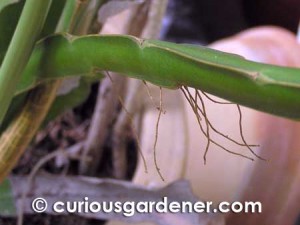
Roots growing out on the lower part of the cactus-like Keng Hwa leaf. When the leaf grows even longer, roots will appear higher up on the stem.
Our Keng Hwa plants grow in pots filled with coarse, sandy soil. They don’t like too much watering, although too little will make the lengthy leaves flaccid (mind out of the gutter, please!). When they have sufficient water, though, the leaves will be able to support themselves enough to be a nuisance – I’ve lost count of the number of times I’ve been slapped in the face when passing by or watering them!
The Keng Hwa has a few aliases. It’s an epiphyllum – which means “upon the leaf” in Greek. Our variety is the epiphyllum oxypetalum – or broad-leaved epiphyllum, also known as Dutchman’s Pipe, Night Queen, Night Blooming Cereus, or Gul-e-Bakawali (Hindi).
The cereus is a form of cactus that is characterised by very prolonged bodies. They are mostly large and quick growing columnar cacti that are found in South America and the West Indies. In Greek and Latin, the name signifies a torch.
In Latin, oxypetalum means “with acute petals”, referring to how the petals of the flower end – in a short, narrow point.
And the flowers are the highlight of the plants. For one thing, they are beautiful. An abundance of curved, slim white petals surround a profusion of delicate white anthers, and in the centre of all the whiteness is a thick, dark pink style capped by several yellow stigmas. Each flower has a diameter of perhaps 15cm when they’re fully open.
Besides that, the flower has a distinct, sweet perfume. That alone signals us when the flowers are in bloom. We once had several blooms open at the same time, and the scent of the flowers absolutely permeated the house.
Oh yes, did I forget to mention that these flowers only bloom at night? They start to open from 8 or 9pm, and are fully open within 2 to 3 hours.
And as quickly as they bloom, so do they die. The Keng Hwa flower lasts for one night only. You will see a wilted flower dangling by its stem the following morning, and it will wither and drop off not long after that.
One interesting thing we noted was that the flowers are very sensitive to light. A blooming flower slowed opening while the light was on, but once switched off, the flower bloomed fully in record time! No wonder one of the names for the plant is “Night Queen”!
It’s not just the flowers that are photosensitive. The plant didn’t flower for months after we got it, stoically growing its long, lobe-edged leaves in the south-facing position we initially had it in. A friend suggested shifting it to a northern-facing spot that is shaded in the morning and gets indirect late afternoon to evening sunlight. Lo and behold, shortly thereafter, the first bud emerged, and since then, we’ve been blessed with the sight and scent of many flowers.
I’m also excited to share that we’re currently witnessing the development of the first Keng Hwa fruit ever in our home! It initially appeared like a flower bud, but then took on a pentagonal, oblongish shape. After 2 weeks, it is about 2cm long and has turned from green to an amazing pink, akin to Dragonfruit. I am keen to see how it will eventually turn out.
The Keng Hwa plant is said to be native to South America. Somehow, it made it’s way to China, where it’s ethereal beauty made an impact, and I guess settlers to this region brought it with them when they migrated.
Some Asians believe that the Keng Hwa flower is a symbol of good luck, so you can find it in homes across Asia. Since the flowers don’t bloom often, such an occasion is considered to be auspicious. Some people draw numbers for the lottery in front of the opened flowers, like it is a talisman of good luck. Others use the flowers for medicinal purposes. We just like to admire the flowers when they appear. ![]()
The reputed medicinal qualities of the Keng Hwa flowers are supposedly to aid the skin when boiled in a soup, and as one of the ingredients in a medicine that is said to cure asthma. I have no firsthand knowledge of this, so I can’t say whether these really work.
The plants are relatively fuss-free, once you’ve discovered the right spot and conditions for them. On occasion, passing pests like beetles stop by to nibble holes in the leaves. A tiny spray of insecticide will deter them. Apart from that, they’re interesting plants to have.
This post is co-credited to my mum, the Keng Hwa Queen in our home! ![]()
© 2010 curiousgardener.com All rights reserved.

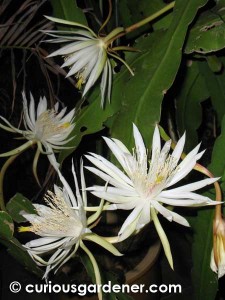
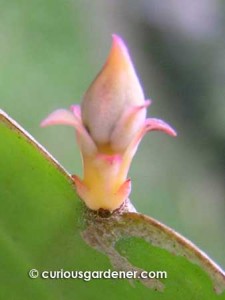
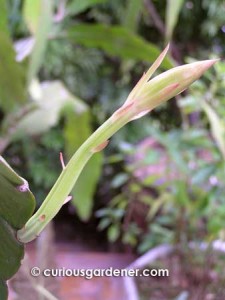
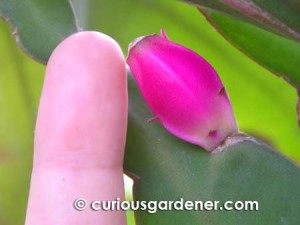

hi there, i found yr web site, very informative, i enjoyed all the info that u shared with everyone.
I live in Bali since the late 70′s, i am a proud owner of the night queen, had the plant for over 25 years, however, it took a beating a couple of years ago, heavy rainy season, looks like it will be the same this year, anyway i am wondering as u live in the tropics, do u have any hints how i can re-pot my queen, best regards
Roma
Hi Roma, thanks for dropping by! Our plants are younger than yours and we haven’t had to re-pot them yet. Can I refer you to the online gardening forum here – Green Culture Singapore (in the list of gardening sites on the right) – where more experienced gardeners can advise you. I wouldn’t want to give bad advice that would affect such a venerable plant! 25 years is darned impressive! All the best
As a follow-up to what I mentioned about the fruit – nothing happened. It didn’t grow any bigger and it didn’t do anything more spectacular than to drop off after several weeks on the plant. It was still pink – albeit a darker, faded pink – and a little dehydrated when that happened. Too bad. I was hoping it would grow into a dragonfruit-like fruit!